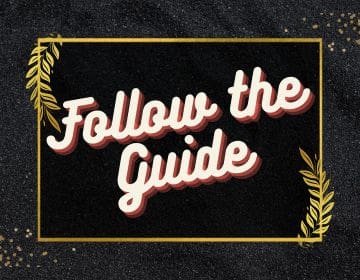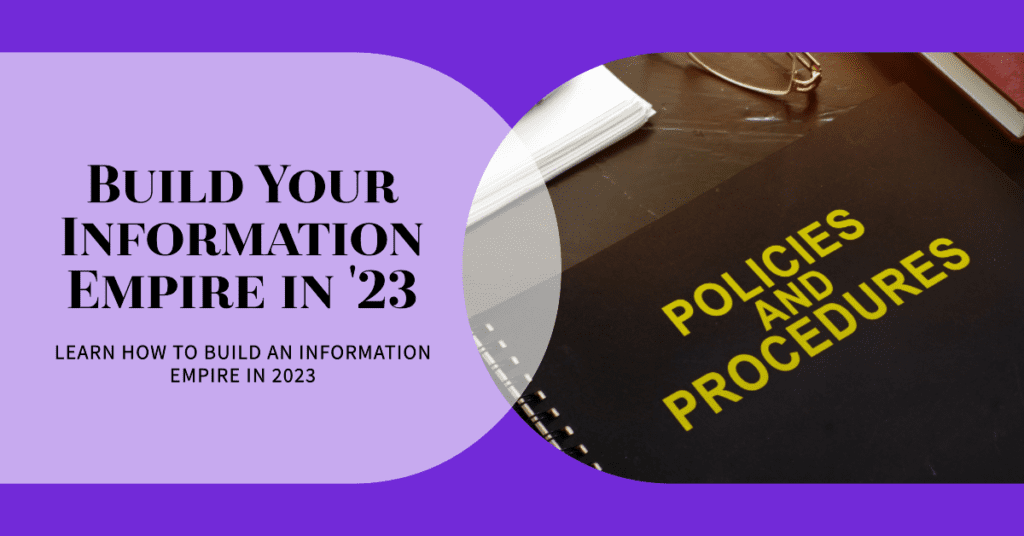Why use a content brief?
Imaging heading out for an unknown destination without a clue where you’re going. What do you take? How long will you be gone? Do you turn right or left (never mind North or South)? Who is going along? Who will you find when you get there?
Too many questions. Too little direction!
A content brief provides direction for your writing projects. It doesn’t matter if you are writing yourself, handing that off to someone, or writing for someone else the key will be that content brief.
What is a Content Brief
A content brief is a document that provides writers with a clear understanding of the purpose, goals, and expectations for a specific piece of content. It is a critical tool that can help writers produce high-quality content that meets the needs of their clients or target audience.
One of the key benefits of a content brief is that it helps writers to focus on the specific goals and objectives of a project. This means that writers can create content that is tailored to the needs of their clients or target audience, making it more relevant and engaging.
For example, a content brief may include information on the target audience, such as their age, gender, interests, and preferences. This can help writers to create content that resonates with the target audience and encourages them to take action.
Another benefit of a content brief is that it provides writers with a clear understanding of the project. This includes information on the length of the content, the tone and style, and any specific formatting requirements. This can help writers to manage their time more effectively and ensure that they are meeting the expectations of their clients or editors.
A content brief can also help writers to avoid misunderstandings and errors. By providing writers with clear guidelines and expectations, a content brief can reduce the risk of miscommunication and ensure that the final content meets the desired standards. This can save time and money for both writers and clients and can help to build a strong and positive relationship between the two parties.

Overall, a content brief is an essential tool for writers who want to produce high-quality content that meets the needs of their clients or target audience. By providing writers with clear guidelines and expectations, a content brief can help to focus their efforts, improve their efficiency, and reduce the risk of errors and misunderstandings.
What To Include in a Content Brief
A content brief is a document that provides a writer with a clear and detailed outline of the content I expect them to create. The brief helps writers understand what I expect of them, and it serves as a guide for them to ensure that they deliver high-quality content that meets the needs of the client or audience.
A writer should include the following information in a content brief:
By including these elements in a content brief, the writer will clearly understand the expectations, and they can create content that is aligned with the objectives and expectations of the client or audience.
Defining the Purpose for the Content
When creating content, it’s important to ensure that it reflects the purpose, values, and mission of the brand or organization. The purpose of the content should be clear and align with the overall goals and objectives of the company. The values and mission of the brand should also be reflected in the tone and messaging of the content. This not only helps to establish the brand’s identity and personality, but also allows the audience to connect with the brand on a deeper level.
By aligning the content with the purpose, values, and mission of the brand, the content is more likely to resonate with the target audience and ultimately achieve its intended results. It’s important to keep this in mind throughout the content creation process, from ideation to publication, to ensure that the content is consistent with the brand’s overall identity and message.
Identifying your target audience for effective content creation
Identifying the target audience is a crucial aspect of creating effective content, and it’s especially important for regenerative AI. The writer should consider who they intend the content for and what level of familiarity the audience has with the concept of regenerative AI.
The writer should research the target audience and gather information such as their age, gender, education level, profession, and interests. The writer should consider the audience’s prior knowledge of regenerative AI and related concepts. Are they experts in the field, or are they just learning about the concept for the first time?
Based on this information, the writer can tailor the content to meet the needs and expectations of the audience. For example, if the audience comprises experts in the field, the content can delve into technical details and advanced concepts. If the audience is new to the concept, the content should be more introductory and focus on explaining the basics.
By identifying the target audience and their level of familiarity with regenerative AI, the writer can create content that is both informative and engaging. The content will be more effective in delivering the message and achieving its intended purpose, whether that is to educate, inspire, or persuade the audience.
Establishing the Right Tone and Style for Your Content
Determining the tone and style of the content is crucial in creating a successful piece that resonates with the target audience. The tone and style can affect the way readers perceive the content, as well as their engagement and interest in the topic.
We should consider the brand voice when determining the tone and style of the content. The brand voice is the unique personality and values that the brand wants to convey to its audience. To maintain a cohesive image and reputation, the content needs to be consistent.
Consider the audience’s preferences when deciding on the tone and style. This can include their language proficiency, educational background, and cultural context. For example, a piece aimed at a technical audience may require a more formal tone and specialized language, while a piece aimed at a general audience may require a more conversational and approachable tone.
The topic being discussed should also be considered when determining the tone and style. For example, a piece on a serious topic may require a more serious and formal tone, while a piece on a light-hearted topic may require a more playful and casual tone.
Overall, it is important to balance the brand voice, audience preferences, and the topic being discussed when determining the tone and style of the content. This will help create a piece that effectively communicates the intended message and resonates with the intended audience.
Optimize your content with targeted keywords and key phrases
When developing a content brief, it’s important to consider the keywords and key phrases used. This helps to optimize the content for search engines and make it more discoverable to the target audience.
Consider the target audience and their search habits to identify relevant keywords and key phrases. What terms are they likely to use when searching for content related to the topic? What is the purpose of the content and the specific message that needs to be conveyed? What words or phrases are important to include in this message?
By identifying and incorporating relevant keywords and key phrases into the content, you can improve its visibility and relevance to the target audience. It’s important to use keywords and key phrases strategically and naturally, rather than stuffing them in unnaturally, which will harm the content’s search engine optimization.
Creating Engaging Content: How to Structure and Format Your Writing for Easy Reading
When creating a content brief, consider the structure and format of the content. This includes the content organization and presentation to the reader. An effective approach is to use headings, subheadings, and bullet points to break up the content into smaller, more digestible sections. This not only makes the content easier to read but also helps to emphasize important points and improve the overall flow of the piece.
Incorporating relevant images, videos, or other media can enhance the visual appeal of the content and provide additional context or examples. Ultimately, the goal is to create a structure and format that supports the purpose of the content and engages the target audience.
Using Credible Sources for Accurate Content
When creating content, it’s essential to use reliable and trustworthy sources to back up any claims made in the content. Identifying credible sources and references is an important part of the content brief.
Scientific studies, research papers, and industry reports are some examples of credible sources that can support the content. These sources should be up-to-date and relevant to the topic being discussed.
The writer should also ensure that the sources are from reputable organizations or individuals in the field. Proper citation and referencing of the sources used are also important to maintain the integrity of the content and give credit where it is due. By using credible sources and references, the writer can show their expertise and provide valuable information to the audience.
Effective Call-to-Action Strategies to Achieve Content Goals
When creating a content brief, it is important to consider the call-to-action (CTA) included in the content. A CTA is a statement that encourages the audience to take a specific action after reading the content.
For example, the CTA may ask the audience to sign up for a newsletter, follow the brand on social media, or make a purchase. The CTA must apply to the purpose of the content and should provide value to the audience. The language used in the CTA should be clear, concise, and persuasive, and we should prominently display it within the content.
We should also follow the CTA with a clear and easy-to-follow process that will guide the audience toward the desired action. By including a strong and relevant call-to-action in the content, the writer can increase engagement and encourage the audience to take the desired action.
Creating Consistent and High-Quality Regenerative AI Content with Editorial Guidelines
Editorial guidelines are an essential aspect of any content brief, as they help to ensure that the content aligns with the brand’s voice, values, and goals. These guidelines provide a roadmap for the writer to follow and include information on the preferred tone and style of the content, as well as specific formatting requirements.
For example, the guidelines may specify the use of brief paragraphs, bullet points, or subheadings to make the content more readable and scannable. Also provide guidance on the use of keywords and how they are included in the content. By providing clear editorial guidelines, the writer can produce high-quality regenerative AI content that is consistent with the brand’s standards and resonates with the target audience.
Having a well thought out content brief is essential when handing off work to someone or a tool because it helps to ensure that everyone involved agrees and understands the objectives, audience, tone, and other key elements of the content. This can cause a more efficient and effective content creation process, as the writer or tool will clearly understand what we expect and how to approach the project. With a well-defined content brief, the writer or tool will create content that meets the desired outcomes, provides value to the target audience, and aligns with the brand’s message and voice.
It can help to prevent misunderstandings or revisions later on, as the content brief provides a detailed plan for the writer or tool to follow. Ultimately, a well-thought-out content brief can save time, improve the quality of the content, and increase the chances of success for the project.


